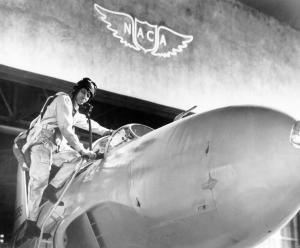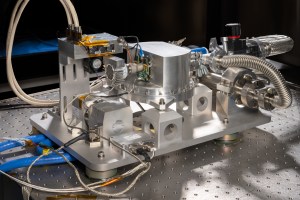
NASA’s Armstrong Flight Research Center in Edwards, California, operates a Gulfstream G-III aircraft, NASA tail number 804, as an aerodynamics research test bed.
Work with the aircraft is funded through NASA’s Aeronautics Research Mission Directorate (ARMD) as part of the Environmentally Responsible Aviation (ERA) project under the agency’s Integrated Systems Research Program.
The directorate is leading the push to validate technologies that have matured through foundational research to a point that merits evaluation at the systems level, including flight test at NASA Armstrong. The goal is to explore environmentally friendly aircraft concepts for the future.
Adaptive Compliant Trailing Edge
One experimental project is currently under way with the aircraft, the Adaptive Compliant Trailing Edge, or ACTE, project, a joint effort between NASA and the U.S. Air Force Research Laboratory.
In the ACTE project, both of the G-III’s conventional 19-foot-long aluminum flaps will be replaced with advanced, shape-changing flaps that form continuous bendable surfaces. The flexible flaps are made of composite materials to a patented design from FlexSys, Inc.
When conventional flaps are moved, gaps exist between the forward edge and sides of the flaps and the wing surface. The ACTE flaps will be gapless, forming a seamless transition region with the wing while remaining attached at the forward edge and sides. The improved flap should eliminate a major source of airframe noise generation.
If successful, this experiment will enable aircraft using such flaps to be significantly quieter during takeoff, approach and landing.
Aircraft Description
The G-III was built by Gulfstream Aerospace Corp. In commercial versions, the G-III’s basic role is that of an executive business aircraft capable of carrying up to 12 passengers. The C-20B version currently flown by the Air Force serves in a similar capacity for high-level government and military officials.
Built in 1982 and carrying serial number 344, NASA’s G-III TN 804 was previously owned and operated by the U.S. Department of Energy and acquired by NASA in late 2009. NASA’s ARMD provided 75% of the $2 million acquisition cost, while the Air Force Research Laboratory provided the remaining 25%.
The G-III’s maximum takeoff weight with full fuel and passengers/cargo is 69,700 pounds. Empty, the unmodified airplane weighs about 38,000 pounds. It has a wingspan of more than 77 feet, is about 83 feet long, and just more than 24 feet high. Average cruising speed for the aircraft is 495 mph (430 knots) and its top speed is 581 mph (505 knots/Mach 0.85) at 28,000 feet. Maximum operating altitude is 45,000 feet. Fully loaded, the G-III has a range of about 4,000 nautical miles (4,600 statute miles).
Two Rolls-Royce Spey Mark 511-8 turbofan engines power the aircraft. Each engine produces 11,400 pounds (5,170 kg) of thrust.
































